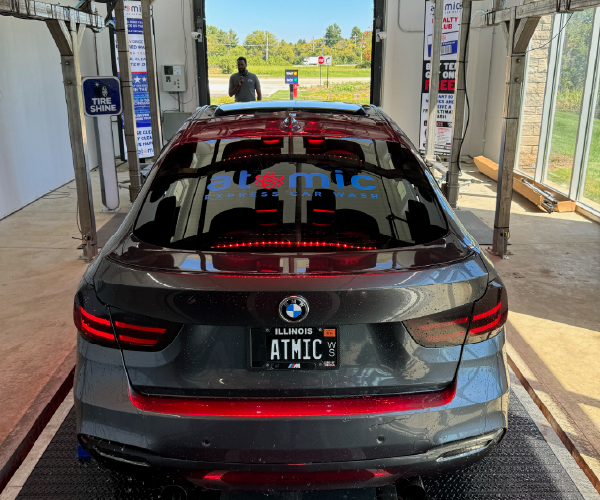
Continental Divide
January 1, 2016
6 minute ReadEnvironmental activists had a reason to cheer in early February, when the European Automobile Manufacturers’ Association (ACEA) announced that demand for alternative-fuel vehicles had risen sharply in the European Union in 2015, signaling that consumers were embracing new technology and were factoring their concerns over the environment into their purchasing decisions.
According to the association, new registrations of alternative-fuel vehicles (AFVs) in Europe surged 20 percent in 2015 to just over 500,000, representing 4.2 percent of total new passenger-car registrations. AFVs had an especially strong fourth quarter of 2015, with registrations up 21.1 percent over the fourth quarter in 2014.
In the fourth quarter of 2015, there were 164,718 AFVs newly registered in Europe, according to the ACEA. The largest gains came from electric vehicles (EVs), with 58,689 cars registered, up an astounding 160.5 percent over the fourth quarter of 2014. Registrations of new hybrid vehicles also rose 28.8 percent in the quarter to 60,911, while cars powered by propane and natural gas actually declined by 31.8 percent to 45,118, according to the ACEA.
Demand in Europe was strongest in the Netherlands, where registrations were up a whopping 258.1 percent for the quarter, followed by France (43.7 percent), Germany (27.8 percent) and the United Kingdom (17.4 percent).
But it wasn’t all good news for environmentalists. In the United States, AFVs continued to struggle to gain a strong foothold, with EVs and hybrids accounting for only 2.7 percent of all new car sales in the first quarter of 2015, down from 3.3 percent during the first quarter of 2014, according to the automotive website Edmunds.com.
Trade-offs
Driven mostly by lower gas prices and the high initial cost of AFVs, many drivers were trading in their AFVs for traditional gasoline-powered cars. According to Edmunds, about 22 percent of people who traded in their AFVs in the first quarter of 2015 bought a new gasoline-powered SUV. That number was up from 18.8 percent in 2014 and was nearly double the rate of 11.9 percent in 2012. Only 45 percent of AFV trade-ins in the quarter went toward the purchase of another AFV, down from about 60 percent in 2012. Last year marked the first time that loyalty rates for AFVs fell below 50 percent, Edmunds said.
“It looks like many hybrid and EV owners are driven more by financial motives rather than a responsibility to the environment,” said Jessica Caldwell, director of industry analysis for Edmunds. “Three years ago, when gas was at near-record highs, it was a lot easier to rationalize the price premiums on alternative-fuel vehicles. But with today’s gas prices as low as they are, the math just doesn’t make a very compelling case.”
That’s bad news for environmentalists since Americans are driving more than ever before. According to U.S. Department of Transportation statistics released in February, Americans traveled 3.148 trillion miles on the nation’s roads and highways in 2015, breaking the record of 3.003 trillion miles established in 2007.
Electric vehicles evolve
But things could be about to change. Later this year, Tesla is expected to unveil its highly anticipated Model 3, which will be priced at about $35,000 and will be able to drive more than 200 miles per charge. Also this year, the Chevy Bolt, which also can drive 200 miles on a single charge, will debut at a price of about $30,000, after government-funded clean-energy incentives.
Patrick Min, a senior analyst at the automotive website TrueCar.com, said the ability of newer EVs to drive farther on a single charge is essential to eliminating “range anxiety” among consumers who otherwise would be willing to purchase an EV.
“The Chevy Bolt will set the stage for the first lower-priced electric vehicle with substantial range,” Min said. “To this point, that type of range was only available with the Tesla at a price of $60,000 to $140,000. Mainstream consumers may now be able to justify an electric vehicle as their only vehicle. Urban consumers, who may not be able to install home-based charging systems in shared garages, could also be able to consider an EV purchase if they don’t need to charge the car daily.
“The low price point will force other entrants to match the performance-to-price ratio that the Bolt offers. Current EVs are similarly priced but only offer half the range.”
Consumers are seeing a wider array of AFVs seemingly every year. For the 2016 model year, the selection of EVs available in the United States included the Chevy Volt, Fiat 500e, Ford Focus Electric, Ford Fusion Energi, Ford C-Max Energi, Kia Soul EV, Mercedes-Benz B-Class Electric Drive, Mitsubishi i-MiEV, Nissan Leaf, Smart ForTwo Electric and Volkswagen e-Golf.
And while most of the AFVs introduced thus far have been compact vehicles, Min said larger AFVs are on the way, which could eat into the gasoline-powered SUV market. The introduction of two crossover vehicles, the Toyota RAV4 EV and the Tesla Model X, are paving the way toward larger AFVs, Min said.
Even luxury carmakers are getting in on the act. In February, Aston Martin, best known as the maker of James Bond’s car of choice, announced that it has agreed to partner with the Chinese company LeEco to create a luxury EV by 2018. Beijing-based LeEco was founded and is run by Yueting Jia, the billionaire who is also behind Faraday Future, an EV startup based near Los Angeles.
The combination of lower price points and a greater variety of AFVs likely will lead to a surge in sales in the coming decade, according to a new report from the Argonne National Laboratory, a nonprofit research laboratory operated by the University of Chicago for the U.S. Department of Energy. The report predicts that by 2030, EVs will make up about 58 percent of the U.S. light-vehicle market, with non-hybrid gasoline-powered cars accounting for only 23 percent of the market.
That big shift toward AFVs would mean that Americans would be using 2.4 million fewer barrels of oil per day, reducing greenhouse-gas emissions by 400 million metric tons per year, according to the Argonne National Laboratory. The growing concern over climate change, which has led to stricter emissions standards on the state and federal levels, will be chief among the reasons for the shift to EVs, the report says.
Still, there are barriers to widespread AFV adoption, Min said.
“Electric vehicles will still need to tackle the challenges of charging infrastructure as well as charging time,” he said. “Consumers are used to being able to fill up in under five minutes and jump back onto the road. Even Tesla’s Supercharger requires nearly 30 to 40 minutes for a charging session, and the Bolt will reach an 80 percent charge in about 60 minutes.”
What about hydrogen?
So far, consumers have been slow to embrace other forms of AFVs. In February, Tony Whitehorn, president and chief executive of Hyundai Motor U.K., said that only about 250 of the company’s ix35 Fuel Cell hydrogen-fuel-cell cars had been sold in Europe, including just 13 in the U.K. He predicted that by 2030, only about 300,000 of the ix35 Fuel Cell cars will have been sold in Europe.
For the 2016 model year, there were only two hydrogen-fuel-cell models available in the U.S., the Hyundai Tucson Fuel Cell and the Toyota Mirai, though the 2017 Honda Clarity is scheduled to arrive at dealerships before the end of this year.
TrueCar’s Min said hydrogen-fuel-cell cars are especially appealing to environmentally conscious consumers because they produce no greenhouse-gas emissions, and the usage cycle closely follows gasoline-powered vehicles, with a relatively quick fill-up procedure and overall vehicle range. But the biggest challenge will be establishing an extensive fueling network across the country.
According to Edmunds.com, there were only 14 public hydrogen fueling stations in the U.S. as of February: 11 in California and one each in Connecticut, Massachusetts and South Carolina. Even factoring in private hydrogen fueling stations, mostly used for fleet vehicles, the number rises to just 35 stations in 14 states.
Regardless of how popular AFVs eventually become, car wash operators aren’t likely to see changes in their bottom line and business model, Min said.
“It will be very hard to impact driving behaviors of the American public, and automakers are doing their best to highlight how all of these new technologies and options can fit into consumer behaviors with minimal compromise,” Min said.







